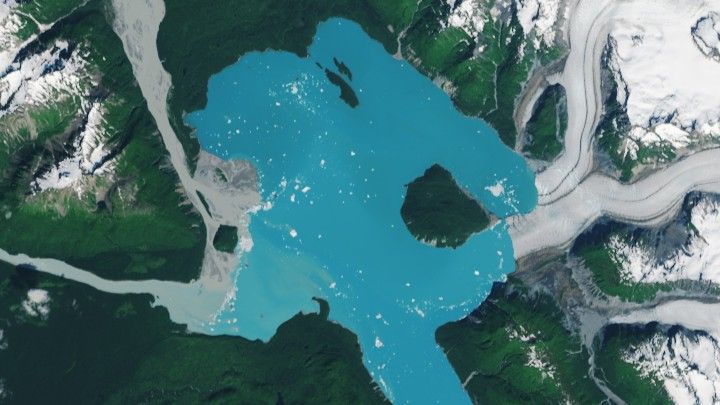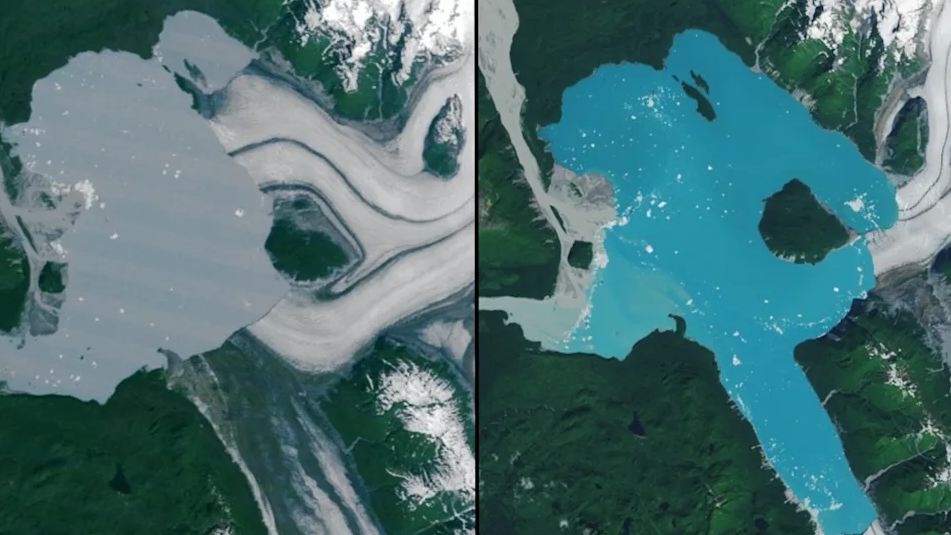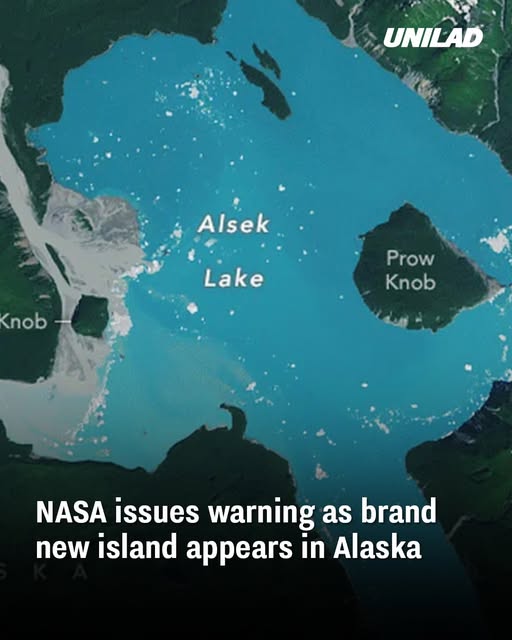NASA has sounded the alarm after satellites confirmed the appearance of a brand-new island off the coast of Alaska. This striking transformation, decades in the making, is more than a geographical curiosity it is a vivid sign of the dramatic changes caused by a warming planet.
The Emergence of Prow Knob Island
The island, known as Prow Knob, was once a mountain completely surrounded by the vast Alsek Glacier. For centuries, the glacier’s mass enveloped the region, connecting the mountain firmly to the mainland. Now, after decades of thinning and retreat, the ice has vanished, leaving the landform isolated by expanding waters. NASA satellites first recorded changes in the 1980s. By 2025, the remaining connection had disappeared entirely, marking Prow Knob as a solitary island in the midst of Alsek Lake.

How It Happened
The process began with the gradual melting of the Alsek and Grand Plateau Glaciers, which once dominated Alaska’s southeastern landscape. As they retreated, meltwater accumulated and expanded into proglacial lakes, steadily swallowing the surrounding ice. Between July and August of this year, the last remnants of glacier ice gave way. What remained was a two-square-mile island, fully encircled by water. Time-lapse imagery compiled from satellite data illustrates this slow yet relentless transformation.
Historical Context
In the early 20th century, the Alsek Glacier extended several miles beyond its current position, reaching as far as Gateway Knob. By the mid-century, it began to pull back, although Prow Knob remained connected to the icy expanse. A glaciologist named Austin Post noted its resemblance to the prow of a ship, inspiring the feature’s name. By 1984, satellite imagery revealed parts of its perimeter touching water. By the late 1990s, both glaciers had retreated significantly, accelerating the lake’s expansion. Today, Alsek Lake covers roughly 75 square kilometers, nearly double its size from 40 years ago.
NASA’s Warning
NASA cautions that the retreat is not finished. With the glacier no longer braced against the mountain, the remaining ice is less stable and more likely to calve — the process of breaking apart into large icebergs. This instability could lead to even faster melting and further reshape the region’s geography. The agency emphasizes that the formation of Prow Knob Island is not an isolated case. Similar processes are underway across the globe as glaciers retreat under rising temperatures. The phenomenon highlights the profound vulnerability of icy landscapes in the face of climate change.
Climate Change Implications
The new island underscores a larger story about the planet’s shifting climate. Glaciers serve as crucial indicators of global warming, and their retreat contributes to rising sea levels, altered ecosystems, and unstable landscapes. Scientists note that the Alsek Glacier’s retreat is consistent with global trends that have accelerated in recent decades. For residents and policymakers, these transformations serve as a reminder of how local environmental changes tie into broader global issues. Each loss of glacier ice represents not only a geographic change but also a marker of how human activity influences natural systems.

Conclusion
The appearance of Prow Knob as an island may intrigue geographers and adventurers, but it is also a warning sign. Alaska’s evolving coastline tells a story of melting ice, rising waters, and accelerating change. NASA’s findings serve as yet another call for urgent global action to address climate challenges before more landscapes are irrevocably transformed.

















